If, like I was, you are confused about why white watercolour exists, why it is included in some watercolour sets (most often watercolour sets at the budget end of the market) and how to use it properly then this post is for you.
First of all, let’s address something I found very confusing in my initial quest to find out what the hell white watercolour is.
What is White Watercolour?
Knowing this one important difference is the key to unlocking how to work with white in watercolour painting: all white watercolour pigments are opaque.
Therefore, white watercolour is not technically watercolour. It is gouache.
Gouache is the term for opaque watercolour. It took me a while to find the answer to this particular query and now I know, it makes things a bit clearer.
Obviously, the label we use for white watercolour is not really that important but knowing how it behaves is.
[Side note: if you are interested in urban sketching with gouache, check out this post.
The fact that the white ‘watercolour’ pigment is opaque and all other watercolour pigments are pretty much translucent is actually where the pain point arises when using white with other watercolours.
Different types of white watercolour
There are many different types of white pigment on the market. Generally, you will see names such as ‘Zinc White’, ‘Titanium White’ and ‘Chinese White’.
Do you want to learn how to sketch your own adventures in ink & watercolour?
GET 50% OFF FOR A LIMITED TIME ONLY!!
I will show you my exact sketching process in ink and watercolour. I have travelled around the world in the last 3 years and this is my go-to system of creating beautiful yet quirky illustrations to capture the magic of my discoveries.
We will work through 3 projects, step by step (pictured below), all of which are real-life examples of things I have sketched along my travels. I provide the photo references you can work from.
We will start by choosing a composition, laying in the initial pencil sketch, adding ink lines, layering watercolour and adding the final touches.
This and much more are included in my course, Sketch Your Adventures, click the button under the image to find out more!
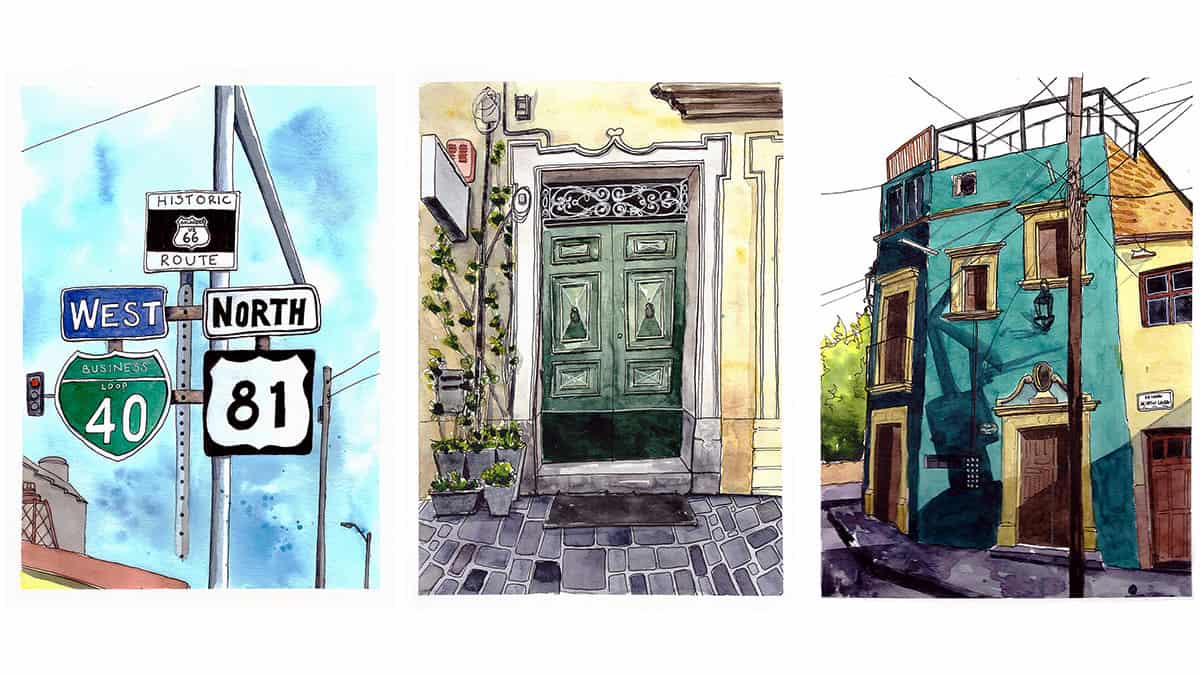
What do these names mean?
Titanium White is the whitest and most opaque white and should not be used for mixing as it can effect the lightfastness of your watercolours.
[Side note: Buff Titanium is a warmer variation of Titanium White – prominent urban sketcher, Liz Steel, uses Buff Titanium, it’s a staple on her palette I believe.]
Zinc White is a cooler more transparent white, intended more for mixing with other colours.
Chinese white was introduced by Winsor & Newton in 1834, it is semi-opaque with a blue undertone. Most Chinese Whites are made from Zinc White.
Which white watercolour should I use?
All of this being said, not all whites are made equal, even if they are called Titanium White, one brand of Titanium White may be quite different to that of another brand. I have not tested many brands myself and the only whites I won are both by Winsor & Newton, however, artist Jamie Williams Grossman has a handy swatch reference of different whites here.
I found this a useful reference to assess which brands are whitest and most opaque.
Check out my ebooks with hundreds of ink & watercolour travel sketches from all over the world. Get some inspiration for your next trip…
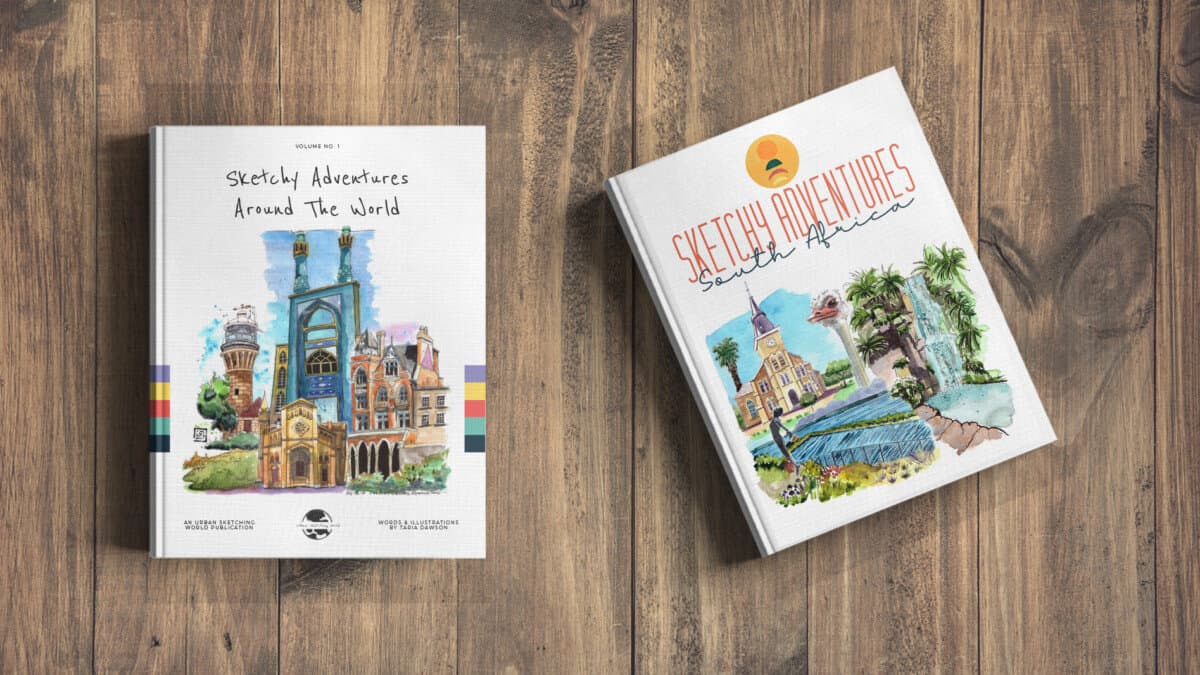
Why Use White Watercolour?
In traditional watercolour painting, it is taught that the white of the paper should be preserved to achieve the colour white (rather than using white paint). However, there were watercolour masters such as John Singer Sargeant and J.M.W Turner that used white within their paintings. Used correctly, white watercolour can be very handy to achieve certain effects that would be difficult to do without it.
I will talk you through some of the pros and cons of using white and show you some examples from my sketchbook to demonstrate how white can really make your own sketches pop.
Firstly, let’s tackle what you should be doing if you intend to have areas of white in your watercolour painting, namely preserving the white of your paper.
How to preserve the white of the paper in watercolour painting?
There are a few ways in which you can preserve the white of watercolour paper which is commonly the way in which to achieve white areas within a watercolour painting or sketch.
Preserving the white of your paper can be quite challenging and requires some planning. This probably explains why it’s not a particular skill of mine!
You can use one of the methods below to help you preserve the white of your paper:
– carefully paint around the area you want to keep white
– use masking fluid, sometimes called frisket or liquid rubber
– use artists tape to mask off areas you want to keep white, this is especially useful for delineating a sky from the ocean for example.
Reasons To Use White Watercolour
Ok, let’s move on to look at some reasons why you may want to use white watercolour and when it’s appropriate to do so.
- As urban sketchers, it can be difficult to pre-plan where you may want to leave the white of your page, so white paint can help to pull out some of these areas
- you may have forgotten to leave the white of the paper, not an ideal strategy but in a pinch it’s useful to know white paint can help
- it may be too difficult to leave white paper and easier to paint opaque white on top
- to make a pastel hue – pastels can be useful for manmade objects, such as painted houses or to achieve a more stylised sketch
- to make interesting effects by having the white bleed into other colours on the page
- using white can make it easier to lift colours from the page
- to achieve a granulation effect
- to create a flat matte background – good for more stylised or illustrative sketches
- fun for splattering, like ocean spray (see my examples below for more on this)
- painting on toned paper
- to paint white-ish things such a snow or bold highlights (such as in eyes) that would be tricky to achieve in any other way
When I received a set of watercolours by Mungyo to try out, a white watercolour pan was included in the set. I did my usual colour mixing chart that I always do when I receive a new set of paints (check out this post on how to make one). You will notice how the colours mixed with white result in pastel hues in the left column and on the top row.
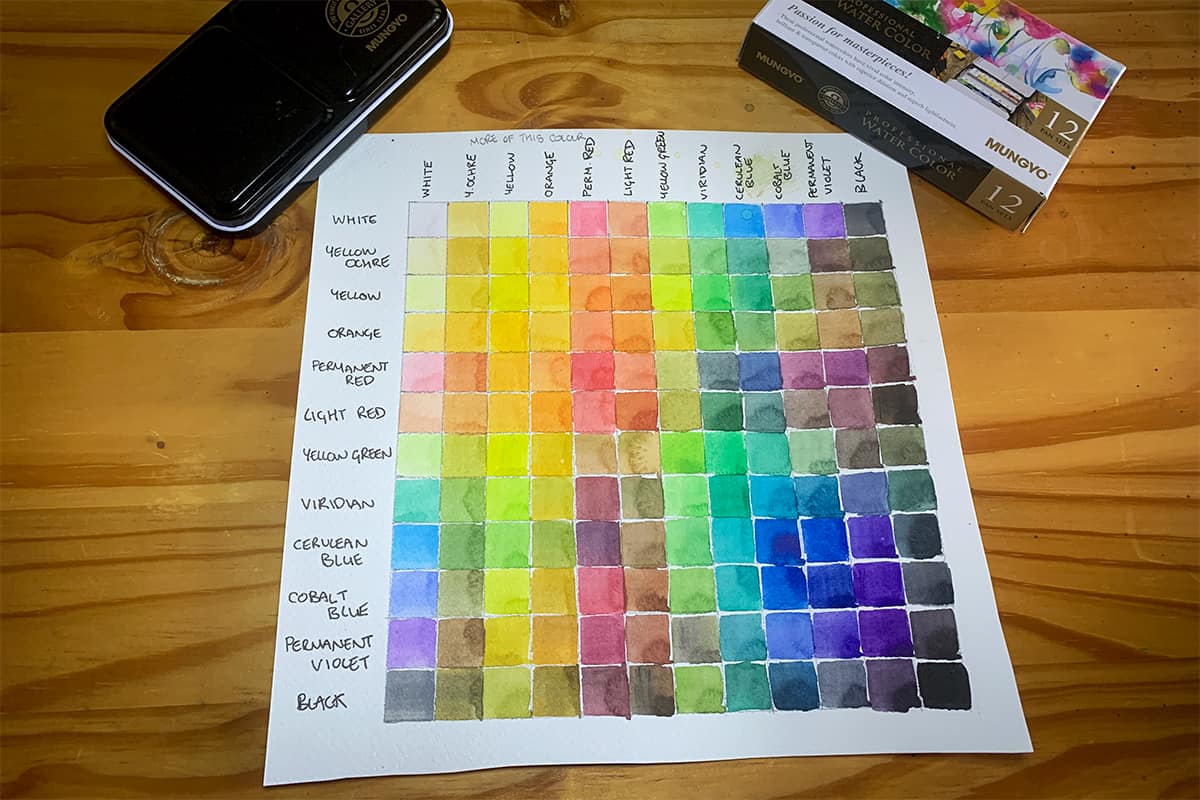
Reasons Why Not To Use White Watercolour
Now let’s look at the reasons when and why you should not use white watercolour paint.
- to lighten a colour (never add white to lighten a watercolour pigment, just add water)
- can muddy a painting very quickly
- reduces luminosity of the painting
- can cause granulation – this is negative if that’s not the effect you want to achieve
- can make a sketch or a painting chalky
- kills transparency of the watercolour paints
- does not layer well
- white can muddy up the rest of your colours on your palette, make sure you keep it in a separate mixing area!
Some of my favourite online classes
- Watercolor Portrait Sketchbook – Carlos Rodriguez Casado
- Watercolor Travel Journal – Alicia Aradilla
- Experimental Watercolour Techniques For Beginners – Ana Santos
- Sketching People with Watercolour – Marcus Penna
Examples of Using White Watercolour
The addition of white watercolour (or gouache) was a real eye-opener to me and there’s no way I could have achieved some of the sea spray or wave effects I have achieved in some of my sketches.
I love using white but the old saying “less is more” is super applicable here. It is very easy to go overboard with white and add highlights all over the place, ruining your sketch or painting. So keep a critical eye and exercise restraint!
I want to share with you some of the ways I have used white in my own work below.
Painting waves or ocean spray
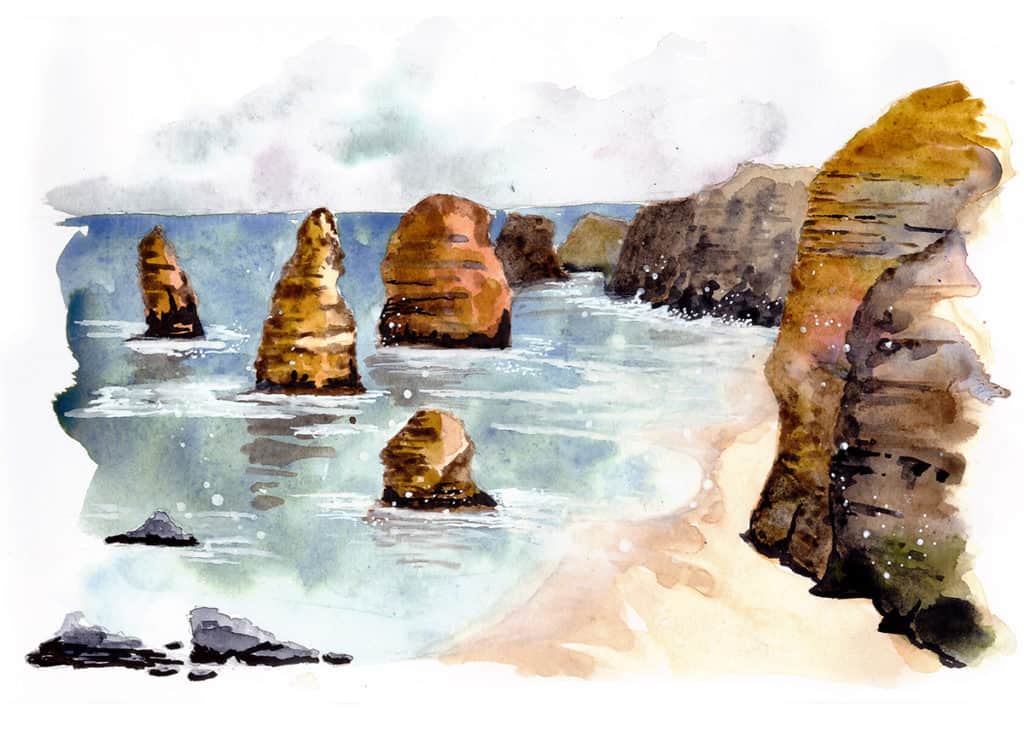
Using white on toned paper
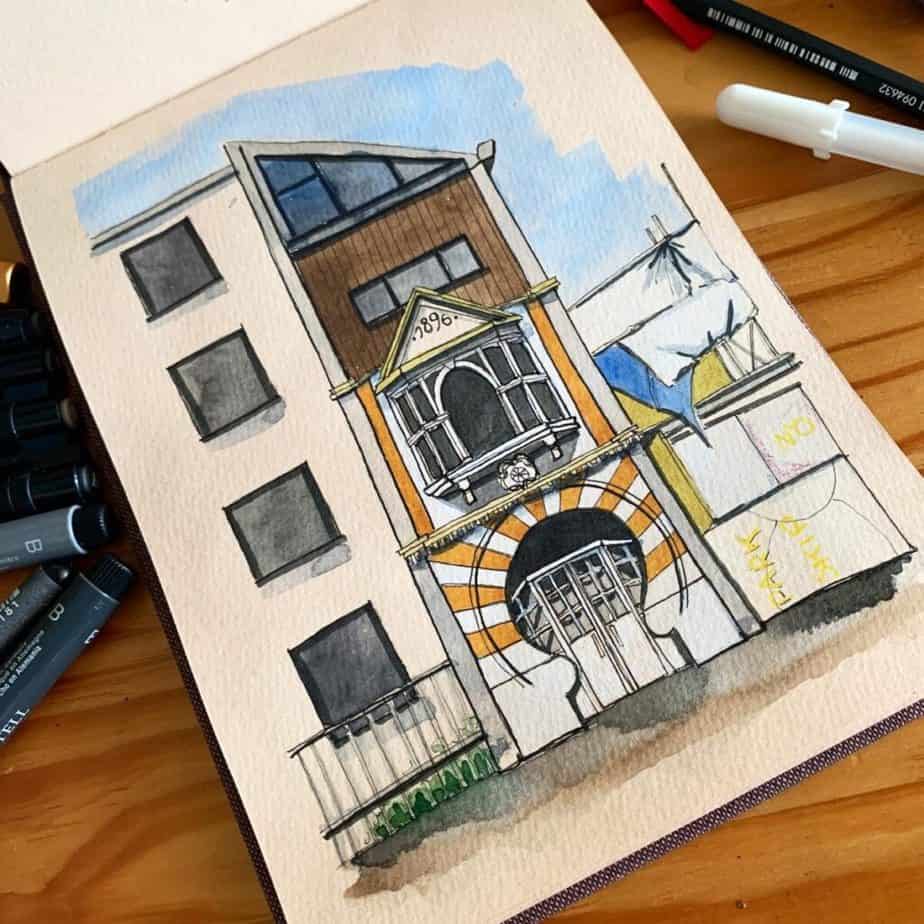
Splattering White
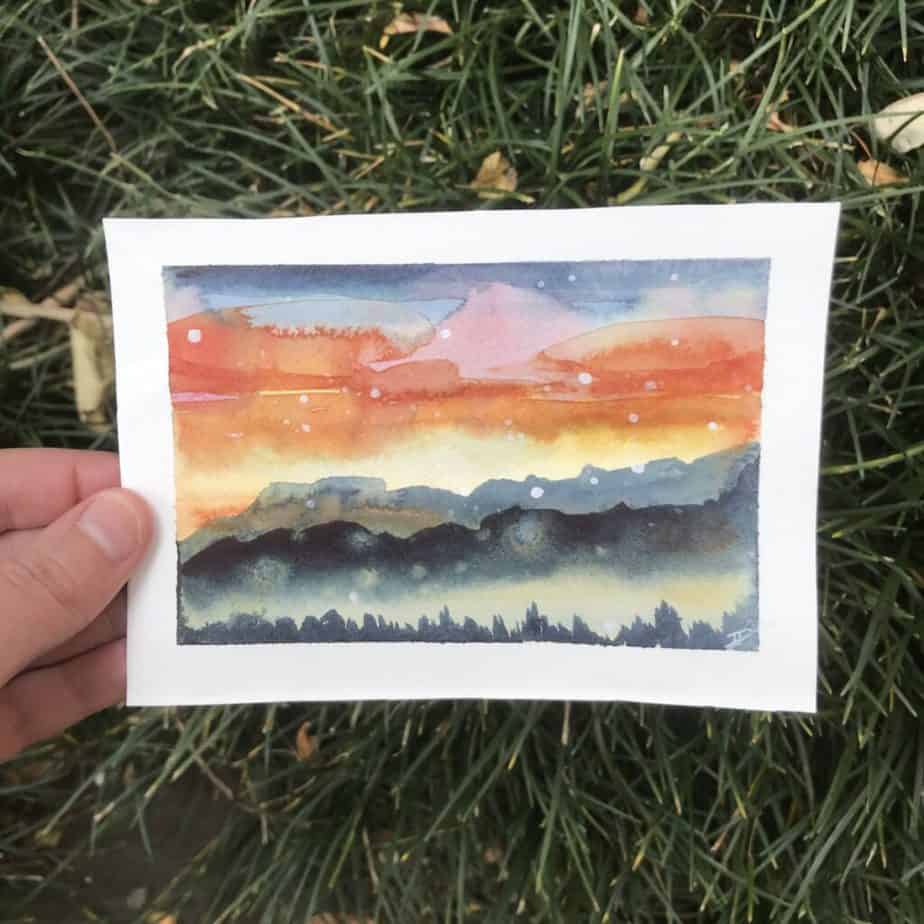
An example of NOT using white watercolour
All the whites in this painting are due to the preservation of the white of the paper. Hopefully, this demonstrates when you would not need to use any white paint at all.
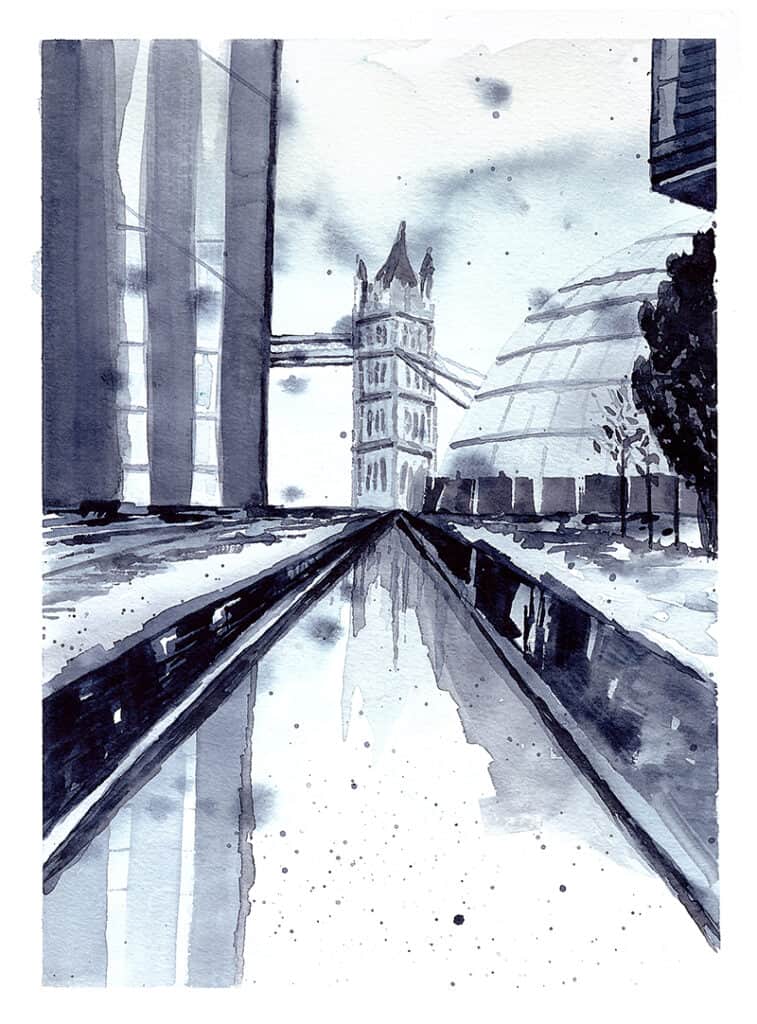
Final Thoughts
I hope you have enjoyed this post and found it useful. Let me know if you use white in your sketches, tag me over on Instagram – @urbansketchingworld
If you want to get a peek at my personal sketches, I post every other day over on Instagram, come say hi! @lookingouttosee_
If you would like to stay in touch and hear what weird and wonderful things will be going on in this here urban sketching world then join my newsletter by popping your email address in the box below. I email once or twice a month maximum with interesting urban sketching-related treasures.

Comments are closed.